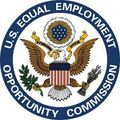All employers, union and non-union alike, should think about making a thorough review of their employee handbook and policies in light of a recent report on employer workplace rules by the National Labor Relations Board’s (NLRB’s) General Counsel, Richard Griffin. In his report, Griffin describes a variety of employment policies that the Board has found unlawful and offers the Board’s reasoning as to why. He also points out acceptable policies and explains what wording or context made that policy lawful. The bottom line: a single word or phrase can, in this Board’s view, make the difference between an acceptable policy or one that violates the National Labor Relations Act (NLRA).
Overly Broad Handbook Policies Can Chill Employees’ Rights
The Board has long taken the position that even neutrally worded employment policies can violate the NLRA if they have a chilling effect on the right of employees to engage in protected concerted activities. These activities, referred to as Section 7 activities, include discussing wages, benefits, and other terms and conditions of employment with other employees and with outside parties, such as government agencies, union representatives and the news media.
In his March 18th Report, GC Griffin explains that the majority of policies found by the Board to violate the NLRA, were unlawful because employees could reasonably construe the language of the rule as prohibiting or infringing on Section 7 activities. Consequently, many well-intentioned, seemingly common-sense policies prove problematic for employers due to their possible interpretation as limiting an employee’s right to discuss their pay or working conditions with others.
Handbook Policies That Result in Violations
The report sets out eight categories of work rules that frequently violate the NLRA and then distinguishes between unacceptable and acceptable language for such rules. The categories and the unlawful aspects of each may be summarized as follows:
- Confidentiality Policies: may not prohibit employees from discussing their wages, hours, workplace complaints or other personal information; prohibiting the disclosure of the company’s confidential information may be acceptable;
- Employee Conduct Toward the Company and Supervisors: may not prohibit employees from engaging in negative, disrespectful or rude behavior or other conduct that may harm the company’s business or reputation; prohibiting employees from disparaging the company’s products, or requiring employees to be respectful to customers, vendors and competitors will typically be acceptable;
- Conduct Toward Fellow Employees: may not prohibit “all” negative, derogatory, insulting or inappropriate comments between employees as that may interfere with the employees’ right to argue and debate with each other about management, unions and the terms and conditions of their employment; requiring employees to treat each other professionally and with respect as well as banning harassing and discriminatory conduct will typically be lawful;
- Interactions with Third Parties: may not completely ban employees from talking to the media or government agencies; a policy noting that employees are not authorized to speak on behalf of the company without authorization may be considered lawful;
- Restricting the Use of Company Logos, Copyrights and Trademarks: may not prohibit all use of company logos and intellectual property because the NLRB upholds employees’ right to use company names, logos and trademarks on picket signs, leaflets and other protest materials; policies that require employees to respect all copyright and intellectual property laws is acceptable;
- Restricting Photos and Recordings: may not ban employees from taking pictures or making recordings on company property; a policy may limit the scope of such a prohibition depending on a competing protective right (such as a healthcare facility protecting patient privacy by limiting photos of patients);
- Restrictions on Leaving Work: because employees have the right to go on strike, a policy that prohibits employees from “walking off the job” will be unlawful; policies stating that failure to report for a scheduled shift or leaving early without permission as grounds for discipline may be acceptable; and
- Conflict-of-Interest Policies: policy may not ban any activity “that is not in the company’s best interest;” policies that give examples of what constitutes a conflict-of-interest, such as having a financial or ownership interest in a customer, supplier or competitor, or exploiting one’s position for personal gain will likely be lawful.
Few Bright Lines for Lawful Policies
The report goes on to offer analysis of additional policies dealing with topics such as handbook disclosure, social media and employee conduct related to a particular employer who agreed to revise their policies as part of a settlement agreement with the NLRB. You may have similar policies in your handbook, making it worthwhile to read what policy language the Board considers problematic and what may pass muster. The takeaway, however, is that the lawfulness of many policies may turn on a single word or phrase. At the present time, it is unclear whether GC Griffin’s report will withstand legal challenge. The best advice is that given the report and its contents, it is important to take time to review your handbook and compare your wording to the examples provided in the report. Although the report is not a legally binding interpretation of the NLRA, it can help you make an informed decision about the risks involved in including certain provisions in your employee handbook.







